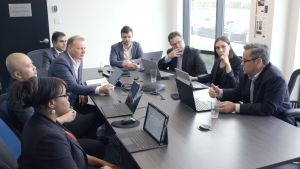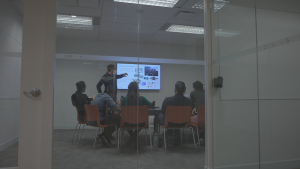
You are a social enterprise even if you don’t know it – Part 2
By collaborating on abandoned drug trials, pharmas decreased time to market from 14 years to 2 years, an 86% improvement – published by Fortune. Another figure: 50% of the new product ideas for Procter and Gamble come from outside the company. And Pfizer invested $100M over five years in collaboration with university scientists and expects to reduce time to market by 5 to 6 years.
These kinds of results and findings are endless, especially for innovation driven companies. An estimation from McKinsey indicates “R&D spending in these (advanced manufacturing) industries is generally large, ranging from 5 to 20 percent of revenue. We estimate that by utilizing social technologies, advanced manufacturing enterprises can capture value equivalent to 12 to 15 percent of costs, by gathering customer feedback, improving collaborating among engineers, and co-creating products with an external community.”
Social Enterprise: Embrace It By A Cultural Change
As we already discussed in part 1 of this blog post: The social enterprise is a fact, not an option. But best practices and business cases also show the need for a close alignment of technical innovations, corporate strategies and culture as well as HR and LCA. Here just some areas to think about:
- Access and rights management: Social collaboration changes the rules on how we have to define and protect intellectual property.
- Leniency programs and patent laws: Sharing knowledge across department and company borders as a key driver for social collaboration needs the adaption of metrics to honor excellence.
- Hierarchy structures: Today communication and knowledge transfer are influenced by formal hierarchies. This will change with fully integrated social technologies and need to be considered in corporate culture.
- Knowledge generation: The knowledge within social collaboration platforms has tremendous value as soon as it is linked with corporate data. Thus, the full integration of social collaboration with business software and data opens new dimensions of business intelligence.
- Customer orientation: The increased speed of problem solving and personal interaction with customers is a key result of social collaboration. This should not be considered as a coincidence but rather implemented as a profitable strategy for service levels.
- Ability to innovate: The advantages of social collaboration in R&D are undisputed, but it will also result in unexpected improvement initiatives for any company area. Be prepared to recognize and act on that instead of losing opportunities and frustrating people.
- Knowledge management: To support job rotation and onboarding, social technologies centrally collect knowledge in a working “pod” rather than in hierarchical data graves.
- Best practice sharing: The establishment of central Wikis, easy to contribute and searchable, helps to gather and structure the hidden knowledge and expertise within the company and increases the speed of problem solving in particular for sales and services.
Enterprises who are able to embrace the opportunities with social collaboration will experience unprecedented capacity for innovation. Need some inspiration for this? Then have a look at the video “Productivity Future Vision”. It gives a taste of what to expect for interdisciplinary collaboration in R&D: stunning technologies tap the full potential of young talents and experts globally, integrate laboratory research in real-time with exploring expeditions, visualize ideas and simulate scenarios to accelerate innovations ready for the market.
Ready to hear more insights on social collaboration? Register for our upcoming webcast – “Collaborate and Innovate Across the Globe – Embrace The Social Enterprise” – on March 31, 2015 from 9:00 – 9:30am PST.
Want to recap the insights from part 1 of this blog post? Then read it here.

![db-16[1]](https://www.microsoft.com/en-us/industry/blog/wp-content/uploads/sites/23/2018/09/db-161.png)





